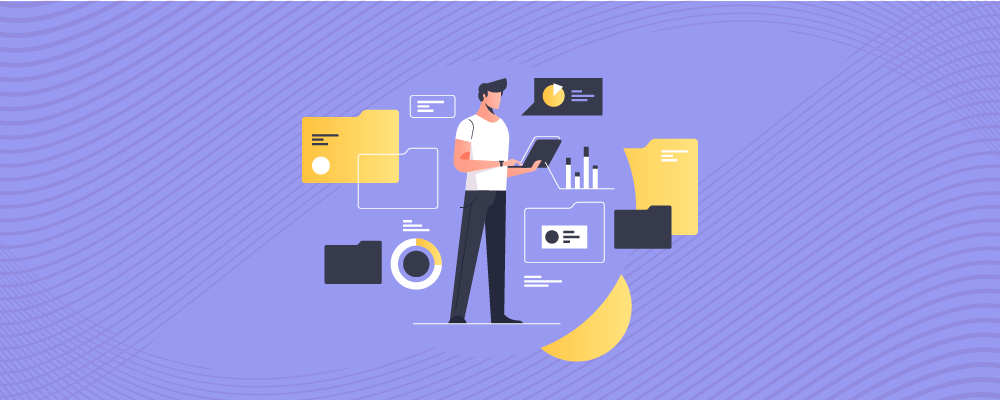Establishing a detailed project plan is usually challenging due to the little information provided. But as the project goes along, additional data develop. So now, the project plan is revised to adapt the new information or data. With each revision, the plan becomes more elaborate and complex. It is known as progressive elaboration in project management.
To define; Progressive elaboration is the process of continuously improving a project plan based on new and relevant insights gathered throughout the project’s lifespan.
As the project progresses and the scope of work is clarified, progressive elaboration enables the project management team to fine-tune the project management plan.
Progressive elaboration allows the project team to obtain stakeholder feedback throughout the project’s lifespan. The team gains the expertise they need to complete the project as a result of the frequent changes in project requirements.
You may have used one or more of the examples of progressive elaboration provided in this article before if you have had changes and conflicts in projects you have handled. You may not have known that this was a form of progressive elaboration, so keep reading for more “demystification” of this process.

What Does Progressive Elaboration In Project Management Mean?
The idea of progressive elaboration takes into consideration the fact that a project’s first blueprint is typically created very early on in the process. At that point, specific criteria and potential barriers are not yet established. As a result, making assumptions and approximate estimations is necessary when creating an initial project plan. As previously obscure operations and requirements become more apparent, they must be taken into account in a more detailed project plan. The phrase “progressive elaboration in project management” refers to this procedure.
The concept of quality design via progressive elaboration may be understood by keeping in mind three crucial factors.
- Detail and precision are not the same things.
- It’s cheap to get it right the first time.
- It doesn’t have to be designed entirely upfront.
Let’s dive into the details…
Detail and Precision Are Not The Same Things
The secret to progressive elaboration is that we can begin with an extremely generalized idea of what we desire. After that, we may continue working on the project and go more and deeper into the specifics as we go. In this manner, we begin our work early and continue it as our design is created. This stops analysis paralysis.
We must be extremely clear in order to achieve this well: Even if a high-level scope statement or design may not be in-depth, it must be accurate nonetheless. It might be brief and straightforward, but it must be entirely precise.
It’s Cheap To Get It Right The First Time.
There are just three options for quality and output on each project:
- Getting things specified correctly the first time is the least expensive option.
- The second choice is to make a mistake and then correct it as the project progresses.
- The third alternative is to make a mistake and produce subpar outcomes.
Overall, it is advisable to start off crystal clear and exact. What improvement? Numerous studies conducted over the past 40 years have demonstrated that there is a correlation between the cost of mistake prevention, the cost of error correction during the project, and the cost of error clean up after the project. Additionally, the ratio must be 1:10:100.
Therefore, a mistake that might be avoided with an additional hour of planning at a rate of $100/hour would need ten hours of project time and $1,000 to rectify during the project and would require 100 hours and $10,000 if a recall was required after the project was completed. And if we employ best practices in quality management to accomplish defect-free design from the very beginning, ratios considerably greater than 1:10:100 have been discovered.
It Doesn’t Have To Be Planned At Once
At every step of the process, we produce high-quality, lucid work. At the same time, we are not required to specify all of the project’s specifics or the entire project at once. We can instead work in phases. At each level, we are precise and explicit, but we become more specific as we progress. Progressive elaboration is the term for this. Performing it properly entails:
- We’ll start with the overall picture and then go down into the specifics.
- The clarity in every meeting, documentation of findings, and confirmation of findings
- Keeping track of the amount we have specified and the amount we still need to specify.
- Bringing the appropriate attendees to every meeting.
Executives and senior managers are more likely to be in the early meetings. And project managers will probably attend every meeting. We collaborate more with the employees as we look for process, workflow, and interface aspects. Additionally, we need more technical experts active on the project side as discussions get more technical.
We continue until every aspect of each characteristic of the good or service we are developing or enhancing is specified. However, as we continue to spell out other areas, we could have a significant portion of the software written or the product built.

Why Do You Need Progressive Elaboration?
There is a need for progressive elaboration of project management for the following reasons:
Choosing Strategic Project Objectives
Project objectives that are precise and explicit have a higher chance of being successful. Setting SMART (Specific, Measurable, Achievable, Realistic, and Time-Bound) objectives becomes easier with greater specificity. The project team may define and refine the SMART targets as they go along, which aids in keeping the project on track and under budget.
Facilitates More Effective Communication
Stakeholder management is made easier by progressive elaboration. It makes it possible for project managers to maintain cohesive teams. The approach may be utilized by the project management team to get input from the front-line team members and solicit assistance from organizational specialists. It is a more logical approach to project management.
Support Project Risk Management
Project managers may identify project risks through progressive elaboration in project management, and they can then make plans for these contingencies and create a risk response strategy to manage risk when it really arises.
Stay Away From Overly Rigid Planning
The rigidity of fixed planning may make the workplace difficult. During an iterative cycle, several product versions are designed, tested, and improved. Planning for progressive elaboration is flexible and allows modifications to take into account more specific requirements.
Recognize Problems and Take Constructive Criticism
It helps in problem discovery, feedback gathering from stakeholders, and improved plan development for the team. It is a more natural way to organize projects.
Types of Progressive Elaboration In Project Management
According to many project managers, we have two types of progressive elaboration in project management:
- Rolling Wave Planning
- Prototyping
1 – Rolling Wave Planning
In rolling wave planning, projects are planned in waves. This suggests that while the long-term work is planned at a higher level, the current task is thoroughly prepared. Remote work is enhanced as the project progresses, and a comprehensive strategy is developed.
Rolling wave planning is a strategic project management technique where teams work in smaller waves or timeframes to meet expected project changes.
High-level planning goes into mid- to long-term work, whereas rigorous scheduling goes into short-term work and deliverables. The lacking knowledge is integrated when it emerges throughout the project’s following steps.
The risks, presumptions, restrictions, and milestones become clearer and more dependable as the project goes along.
For instance, even if you are certain of the first three months, you estimate that a project will take eight months to finish. You will consequently put together a thorough strategy for the following three months. You get more focused as the project progresses and develop the final plan specifics.
Utilizing cutting-edge sequencing, the rolling wave method enables task packages to be handled in progressively greater depth over time.
Despite this planning approach, the project manager still necessary compile a list of significant deadlines and expectations. Milestones and significant hypotheses are crucial in helping stakeholders comprehend why the rolling wave approach is being used and what to expect as the project advances.
When Should the Rolling Wave Method be Used?
This strategy can be applied by the project management team under the following circumstances:
- If it is hard to generate a comprehensive project strategy quickly.
- When it’s unclear what the deliverables are.
- When managing all of the project’s phases is difficult.
- The project team has a set amount of time in which to finish the task.
- Timelines, budgets, and milestones for projects are not always obvious.
- Tasks that follow a process or are sequential must be finished by a certain date.
Example:
A project manager made the decision to pursue the PMP designation.
Although he is unaware of the specifics of the PMP test, he hopes to pass it. He thus merely set the exam date and prepared the training.
Later, after attending the training and learning everything there was to know about their PMP project, he meticulously designed his course of study.
2 – Prototyping
Prototyping involves building a simple working model, evaluating its functionality, or demonstrating a product to a client.
Over the course of this agile process cycle, several product versions are developed, prototyped, tested, and refined. Instead of changing the product gradually over time, the project team does it in real-time. It helps the team to spot problems as they arise, gather feedback from key players, and develop original ideas.
A prototype facilitates learning by assisting in need clarification and planning modification as required. The reason the prototypes encourage progressive development is that they:
- Are utilized during the iterative rounds of creating mockups.
- Used while revising a prototype.
- Permit production of feedback
- Encouraging user experimentation
In A Nutshell…
You may recognize some of these instances if you have worked on real-world projects for some time. The phrase “progressive elaboration” really refers to the primary function of project planning, which is the incorporation of details or adjustments as soon as they are known to the project management.
A typical method for achieving this in waterfall projects, as well as other types of projects, is the rolling wave planning methodology. In certain ways, change management and the handling of change requests are instances of progressive elaboration in project management as well.
Agile projects, with their inherent adaptability, exhibit progressive elaboration in both their organizational structure and the tools and methods they employ. Short iterations, consistent increment delivery, feedback on those increments, and learning from those iterations all help a project learn and inevitably result in improvements. It is possible to incorporate these modifications on time without the use of change requests or change control procedures thanks to the backlog of product needs.
The conclusion is that we don’t plan before we act, regardless of the project type, life cycle, or other approaches we use. We may plan as we go and continue to plan as we go by using progressive elaboration.

